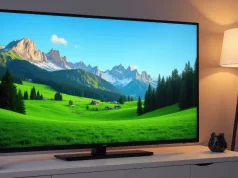Rising energy prices, fossil fuel uncertainty, record-breaking UK summer heat, and a nationwide push toward net-zero living are reshaping how Britain heats and cools its homes. As technology matures and markets develop, the shift is no longer just about pioneering sustainability; it’s about real, significant savings for those ready to invest in eco-tech climate solutions.
Enter the air-to-air heat pump, a compact, incredibly energy-efficient, all-electric system that’s becoming the UK’s smartest investment in home comfort and carbon reduction.
The New Generation of Climate Control
Unlike traditional boilers that burn fuel, or air conditioners that cool but can’t heat, an air-to-air heat pump moves heat energy from the outside air, rather than using energy to create it. In winter, it extracts free heat from the outside air and transfers it indoors; in summer, it reverses the cycle to provide cooling. Because it transfers energy rather than generating it, it can deliver up to 5 units of heat or cool air for every unit of electricity used.
That means lower monthly energy bills, year-round comfort, and zero on-site combustion. As the UK power grid becomes cleaner and greener each year, these systems do too, improving their carbon credentials over time.
Why the UK Is Ready to Change
For decades, the nation’s heating has relied too heavily on cheap gas. But with gas supplies being used for political leverage in Russia and the resulting fuel price volatility on the market, coupled with tightening sustainability regulations, property owners are now rethinking their options. Meanwhile, eight of the 10 warmest years on record have occurred in the UK since 2010, making cooling a genuine concern for British homes built primarily for insulation rather than ventilation.
That urgent dual need, affordable warmth in winter and effective cooling in summer, is what’s pushing the UK market toward reversible air-to-air systems. They’re already the norm in much of Europe and are now gaining traction across the UK, from new-build developments to retrospectively converted apartments and home offices.
The Economics of Efficiency
A well-installed A2A system can slash energy bills by up to 50% for homes using direct-electric heaters or storage radiators. Even households switching from gas or oil can expect considerable reductions in energy use, especially when paired with modern smart controls and proper insulation.
Paul Warner, Director at WarmVent, one of the UK’s leading installers specialising in air-to-air technology, explains, “It’s the simplicity that wins people over. One compact outdoor unit, a few discreet indoor fans, and suddenly you’ve replaced your heater and your air-con with a single, efficient system. People see savings straight away and home comfort they’ve never had before.”
Because inverter-driven compressors adjust automatically to demand, these systems avoid the stop-start cycling that wastes energy in older systems. The result is stable temperatures, lower electricity use, and whisper-quiet operation.
Unlike many home climate technologies, the payback period is also refreshingly short. Plus, with no hot-water cylinder or radiator system to upgrade, installation can be completed in a single day and is typically 30–40% cheaper than a full air-to-water heat-pump conversion.
For urban apartments or garden studios, where hot-water plumbing is impractical, air-to-air provides independent zoned heating and cooling with minimal disruption. One outdoor unit can serve multiple indoor fan coils, each controlled individually, a flexibility traditional systems can’t match.
Clean Air
Beyond temperature control, air-to-air units continuously filter the indoor air, capturing pollen, dust and odours through multi-stage filtration systems. That makes them particularly valuable in cities or for allergy sufferers. Some models also feature dehumidification and purification modes, maintaining optimal humidity year-round, a serious comfort upgrade in Britain’s damper climate.
A Bridge to the All-Electric Future
Government incentives such as the Boiler Upgrade Scheme currently focus on air-to-water and ground-source systems, leaving air-to-air units outside grant eligibility. Yet industry observers expect this to change very soon. The low installation cost and measurable carbon savings make them strong candidates for future inclusion.
Even without subsidies, uptake is rising thanks to falling hardware prices and 0 % VAT. The economics improve further when combined with solar PV and battery storage technologies, which are increasingly seen on new self-build and retrofit projects. Paul Warner notes, “The synergy is incredible. Your solar panels generate power during the day; your heat pump uses that energy to cool or preheat your home; and a small battery covers you through the evening. It’s a glimpse of what net-zero living really looks like, it saves energy costs, and it doesn’t sacrifice comfort.”
What Property Owners Should Know
1. Design matters – Proper sizing based on room-by-room heat-loss calculations avoids short-cycling and maximises efficiency.
2. Placement is key – Outdoor units need precise airflow and compliant noise levels. Indoor fans should blow across rooms, not directly onto furniture, for example.
3. Maintenance is minimal: clean filters periodically, keep the outdoor coil free of leaves, and book a professional service every few years.
4. Smart controls save extra – Scheduling, zoning, and off-peak tariffs can trim 10–20% from running costs with zero loss of comfort.
In most parts of the UK, air-to-air systems operate efficiently even in freezing weather, automatically running short defrost cycles to maintain steady heat output. So your setup should be carried out by an expert installer, so everything works as it should, all year-round.
The Bigger Picture
As Britain accelerates its transition away from fossil fuels, small-scale electrification steps, such as A2A installations in UK homes, are collectively making a huge impact. They reduce household emissions, ease pressure on the national grid through higher efficiency, and future-proof properties for the decades ahead.
The technology is already mainstream across Scandinavia and Central Europe, regions with harsher winters than the UK. It’s only a matter of time before reversible heat pumps become as standard here as double glazing.
The Takeaway
Saving the planet doesn’t have to mean spending more. For many homeowners, cutting carbon also directly cuts costs. Air-to-air heat pumps prove that sustainability and practicality can coexist, providing property owners with comfort, control, and genuine long-term value.
WarmVent are specialists in air-to-air heat-pump technology and all-electric climate solutions for UK homes, click here for a free air to air heat pump quote for your property.



